
Users’ needs should be considered when determining which public services should be provided and how they should be delivered in accordance with the following expectations: (1). A multi-channel service delivery approach, meaning the availability of alternative channels, physical and digital, to access a service, is an important part of public service design, as users may prefer different channels depending on the circumstances and their needs; (2). A single point of contact should be made available to users, to hide internal administrative complexity and facilitate access to public services, e.g. when multiple bodies have to work together to provide a public service; (3). Users’ feedback should be systematically collected, assessed and used to design new public services and to further improve existing ones; (4). As far as possible, under the legislation in force, users should be able to provide data once only, and administrations should be able to retrieve and share this data to serve the user in accordance with data protection rule; (5). Users should be asked to provide only the information that is absolutely necessary to obtain a given public service.
Covered by:
| Recommendation 10 | Use multiple channels to provide the European public service, to ensure that users can select the channel that best suits their needs. Supporting Solutions |
| Recommendation 11 | Provide a single point of contact in order to hide internal administrative complexity and facilitate users’ access to European public services. Supporting Solutions |
| Recommendation 12 | As far as possible under the legislation in force, ask users of European public services once-only and relevant-only information. Supporting Solutions |
| Recommendation 13 | Users should be asked to provide only the information that is absolutely necessary to obtain a given public service. Supporting Solutions |
Legal initiative |
Description |
Recommendations |
|
Short title: European Directive on patients’ rights Status: In force and transposed |
The aim of this directive is to set out the conditions under which a patient may travel to another EU country to receive safe and high-quality medical care and have the cost reimbursed by their own health insurance scheme. It also encourages cooperation between national healthcare systems. |
Recommendation 11 |
|
Short title: Single Digital Gateway Regulation Title: Regulation (EU) 2018/1724 of the European Parliament and of the Council of 2 October 2018 establishing a single digital gateway to provide access to information, to procedures and to assistance and problem-solving services and amending Regulation (EU) No 1024/2012 Status: In force and transposed |
The single digital gateway will facilitate online access to the information, key administrative procedures and assistance and problem-solving services that citizens and businesses may wish to contact if they encounter problems when exercising their internal market rights while living in or doing business in another EU country. | Recommendation 10 Recommendation 11 Recommendation 12 Recommendation 13 |
|
Short title: Services Directive Status: In force and transposed |
This Directive aims to remove barriers to trade in services in the EU, by: - simplifying administrative procedures for service providers; - enhancing the rights of consumers and businesses receiving services; and - fostering cooperation among EU countries. |
Recommendation 11 |
|
Short title: Open Data Directive Title: Directive 2019/1024 on open data and the re-use of public sector information (Recast) Status: In force and transposed |
The directive promotes the use of open data and lays down the legal framework for the reuse of public-sector information such as geographical, land registry, statistical or legal information held by public-sector bodies or public undertakings, and of publicly funded research data. Public-sector bodies and public undertakings must make their documents available in any pre-existing format or language and, where appropriate, by electronic means in formats that are open, machine readable, accessible, findable and reusable, complete with their metadata. | Recommendation 11 |
|
Short title: INSPIRE DIRECTIVE Title: Directive 2007/2/EC on establishing an Infrastructure for Spatial Information in the European Community Status: In force and transposed |
The INSPIRE Directive lays down general rules setting up an infrastructure for spatial information in Europe for the purposes of European Union (EU) environmental policies and for policies or activities which may have an impact on the environment. The European infrastructure builds on that of spatial information that is established and operated by EU countries. |
|
|
Short title: Web accessibility directive Status: In force and transposed |
This Directve aims to make public sector websites and mobile applications more accessible, and to harmonise varying standards within the EU, reducing barriers for developers of accessibility-related products and services. This will allow EU citizens, particularly those with a disability, to gain better access to public services, an underlying principle of the EU’s Digital Agenda for Europe and eGovernment Action Plan 2016-2020. |
Recommendation 12 |
|
Short title: Regulation on the free flow of non-personal data Status: In force |
This regulation aims to ensure that electronic data, apart from personal data, can be processed freely throughout the EU. It bans restrictions on where the data can be stored or processed. It applies to the processing of non-personal data which is: - provided as a service to users living in the EU; - conducted by an individual, company or organisation in the EU for its own needs. |
Recommendation 11 |
|
Short title and title: Commission Implementing Decision (EU) 2015/296 - eIDAS Regulation Status: In force |
This Decision lays down the procedural arrangements for facilitating cooperation between Member States, as is necessary in order to ensure the interoperability and security of electronic identification schemes of which Member States are intending to notify or have notified the Commission. | Recommendation 11 |
|
Short title: Data Governance Act Status: Legislative Proposal |
This Proposal aims at creating a legislative framework for the governance of common European data spaces. It proposes measures: - to unlock more publicly held data for research serving the common good; - to support voluntary data sharing by citizens (‘data altruism’); and - to set up an EU-level governance structure to prioritise standardisation needs and improve data interoperability. |
Recommendation 11 |
| Standards and Specifications | Relevant Recommendations | Corresponding Solutions |
|
Name: DCAT-AP Description: The DCAT Application Profile for data portals in Europe (DCAT-AP) is a specification based on the Data Catalogue Vocabulary (DCAT) developed by W3C. This application profile is a specification for metadata records to meet the specific application needs of data portals in Europe while providing semantic interoperability with other applications on the basis of reuse of established controlled vocabularies (e.g. EuroVoc) and mappings to existing metadata vocabularies. |
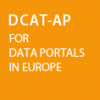
|
|
|
Name: BregDCAT-AP -RoR Description: The Registry of Registers is a solution dedicated to an application profile of DCAT-AP for base registries, namely, BRegDCAT-AP, aiming to provide a standard data model / specification for base registries access and interconnection. |
Recommendation 13 | |
|
Name: Core Public Service Vocabulary (CPSV) Description: The Core Public Service Vocabulary Application Profile is a data model that has been developed in the context of a Working Group for describing public services. The main focus of the CPSV-AP version 1.00 was the description of public services and business events on the Points of Single Contact which each Member State had to implement in the context of the Services Directive (2006/123/EC). |
||
|
Name: Core Standards and Specifications Vocabulary (CSSV) Description: The CSSV is the vocabulary used for the information exchange related to standards and specifications amongst software solutions, as well as, it is the key element for the development of the new release of the EIRA Library of Interoperability Specifications (ELIS). |
|

|
|
Name: Core Assessments Vocabulary (CAV) Description: The Core Assessment Vocabulary represents and defines what an “Assessment” of “assets” is and how to perform the assessment based on “Criteria”. It is a domain-agnostic vocabulary, meaning that it can be used to assess any type of assets. |
Recommendation 11 | |
|
Name: Core Standards and Specifications Vocabulary (CSSV) Description: The CSSV is the vocabulary used for the information exchange related to standards and specifications amongst software solutions, as well as, it is the key element for the development of the new release of the EIRA Library of Interoperability Specifications (ELIS). |
Recommendation 11 |
| Concrete example/good practice | Summary |
| The Norwegian Interoperability Framework (NIF) | Two main initiatives characterize Norway’s efforts to foster cooperation and coordination among public administrations. The first one is the revision (in 2019 and 2020) of the architecture principles for public sector digitalization which goal is to foster the public sector’s interoperability and interactions with businesses. The implementation of the architecture principles is mandatory for public administrations at the national level and recommended for those at the sub-national level (e.g. municipalities). The second initiative is the publication of the Norwegian Interoperability Framework (NIF) in 2018. It is a national transposition of the European Interoperability Framework (EIF) that aims to help public administrations in defining, developing and managing digital public services, including cross-sectorial ones. Norway’s experience highlighted the importance of stakeholder involvement and participation, and thus of collaboration, to improve interoperability. |
| Solution | Description | Associated Recommendations |

|
eID functionalities can be used for several services, through different channels.
By being able to share citizens' information across borders through the e-IDAS nodes, eID promote the once-only principle. |
|
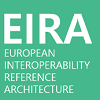
|
The technical view of EIRA takes into account the use of multiple channels to provide the European public services. | Recommendation 10 |

|
eSignatures functionalities can be used by citizens to access several public services, through different channels. | Recommendation 10 |

|
Question D8 of the Service Delivery section of the IMAPS questionnaire assesses through how many channels digital services are delivered. It encourages the delivery of services through multiple channels (i.e. higher score). | |
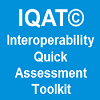
|
The IQAT assesses whether the solution being deployed is available through multiple channels. The IQAT assesses to which extent end-users were involved in co-creation of the solution. |
|

|
Ref2link offers multiple environments allowing the user or integrator to pick up the detection rules that fit its need. | Recommendation 10 |
|
OIMAPS solution v1.00 |
Question D1 of the Service Delivery section of the OIMAPS questionnaire assesses to which types of end-users the public service deliver data, information and knowledge. Furthermore, question D6 of the Service Delivery section of the OIMAPS questionnaire assesses to which extent the public service is organised based on the Once-Only Principle (OOP) and in relation to data, information and knowledge that are requested by its end-users (citizens, businesses, administrations). | Recommendation 10 |
|
TIMAPS solution v1.0.0 |
Question D10 of the Service Delivery section of the TIMAPS questionnaire assesses the user experience of a public service by examining whether the public service supports multiple and different hardware and software. Question D9 of the Service Delivery section of the TIMAPS questionnaire assesses the number of channels through which digital services are delivered. It encourages the delivery of services through multiple channels (i.e. higher score). |
Recommendation 10 |
|

|
EULF Blueprint Recommendation 8 on user-centric design recommends delivering services through users' preferred channels and optimising the services for those channels. | |

|
Big data test infrastructure (BDTI) helps public administrations improve the experience of the citizen, make government more efficient and boost business and the wider economy through big data. Big data is high-volume, high-velocity and high-variety information that requires new forms of processing to enable enhanced decision-making, insight discovery and process optimisation. | Recommendation 11 |

|
The CISE Node manages the communication protocol among participants, including the security, access control to the information and the reliability aspects. The CISE Node is a common block for all the partners connected to the network, but the management is not centralised. It uses the CISE Data and Service Models to ensure technical and semantic interoperability among the CISE stakeholders. | |

|
The Core Assessment Vocabulary represents and defines what an “Assessment” of “assets” is and how to perform the assessment based on “Criteria”. It is a domain-agnostic vocabulary, meaning that it can be used to assess any type of assets. | Recommendation 11 |
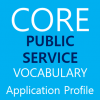
|
The Core Public Service Vocabulary Application Profile is a data model that has been developed in the context of a Working Group for describing public services. The main focus of the CPSV-AP version 1.00 was the description of public services and business events on the Points of Single Contact which each Member State had to implement in the context of the Services Directive (2006/123/EC). |
|

|
The CSSV is the vocabulary used for the information exchange related to standards and specifications amongst software solutions, as well as, it is the key element for the development of the new release of the EIRA Library of Interoperability Specifications (ELIS). | Recommendation 11 |
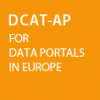
|
The DCAT Application Profile for data portals in Europe (DCAT-AP) is a specification based on the Data Catalogue Vocabulary (DCAT) developed by W3C. This application profile is a specification for metadata records to meet the specific application needs of data portals in Europe while providing semantic interoperability with other applications on the basis of reuse of established controlled vocabularies (e.g. EuroVoc) and mappings to existing metadata vocabularies | |

|
e-Certis is a free online tool mapping documents requested in public procurement procedures across borders. The system identifies and links certificates necessary as proof of compliance with tender criteria in various areas of administrative verification (e.g. tax, social security obligations, criminal records, etc.). This helps bring clarity to the cross-border bidding process. Information provided by e-Certis is inserted by National public entities in charge and regularly updated. The e-Certis service is linked with the European Single Procurement Document (ESPD), which is a single self-declaration form of a bidder's eligibility in public procurement. e-Certis and the ESPD significantly reduce the effort needed for submission of a tender offer and facilitate bidding across borders. |
|
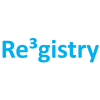
|
Re3gistry provides a central access point that allows labels and descriptions for reference codes to be easily looked up by humans, or retrieved by machines. It supports organisations in managing and updating reference codes in a consistent way, so that all versions of a code remain traceable and properly documented, and do not change or disappear over time. | Recommendation 11 |
| VocBench provides a solution to centralise the management of controlled vocabularies and metadata used by your public administration to support interoperability. | ||

|
The use of CISE specifications and data models, helps to ensure that public administrations are taking into account relevant EU recommendations on standards and specifications in the maritime domain and are seeking to make the approach consistent across borders. | Recommendation 12 |

|
eArchiving provides the core specifications, software, training and knowledge to help data creators, software developers and digital archives tackle the challenge of short, medium and long-term data management and reuse in a sustainable, authentic, cost-efficient, manageable and interoperable way. eArchiving technical specifications are ideal for migrating long-term valuable data between generations of information systems, transferring data to dedicated long-term repositories (i.e. digital archives), or preserving and reusing data over extended (and shorter) periods of time and generations of software systems. |
Recommendation 12 |

|
LEOS is designed to help those involved in draſting legislation, which is usually part of a complex process, by facilitating efficient online collaboration. Comments, suggestions, version control, co-edition, everything is there. Regarding the structure, that is where we aim to be as restrictive as possible and this is not because we are conservative, but because this helps the draſters follow the rules and avoid mistakes. Content is stored in an XML format, currently Akoma Ntoso V3. | Recommendation 12 |

|
The Interoperability Test Bed is a service offered by the European Commission’s DIGIT to facilitate the conformance testing of IT systems. The Test Bed is itself a software system that can be both downloaded and installed locally, but also reused through a shared online installation operated by DIGIT. It offers an intuitive web user interface that allows administrators to define their project’s overall testing setup as well as users to connect and run tests. | Recommendation 12 |

|
The “ESS Enterprise Architecture Reference Framework”, abbreviated ESS EARF denotes a set of documents containing a number of key artefacts, which can be used at various stages in projects as well as in the overall governance of the realisation of Vision 2020. The ESS EARF is the result of the collective and iterative work of the DIME/ITDG Task Force on ESS EA which ran from April 2014 till August 2015. | Recommendation 12 |
|
OpenPM² |
PM² is a Project Management Methodology developed and supported by the European Commission. Its purpose is to enable project teams to manage their projects effectively and deliver solutions and benefits to their organisations and stakeholders. PM² is a light and easy to implement methodology suitable for any type of project. PM² has been custom developed to fit the specific needs, culture and constraints of EU Institutions, but also incorporates elements from globally accepted best practices, standards and methodologies. | Recommendation 12 |

|
The use of ESPD exchange data model can be considered a cornerstone to achieve the once-only principle in public procurement in Europe. | Recommendation 13 |

|
The Registry of Registers is a solution dedicated to an application profile of DCAT-AP for base registries, namely, BRegDCAT-AP, aiming to provide a standard data model / specification for base registries access and interconnection. | Recommendation 13 |









